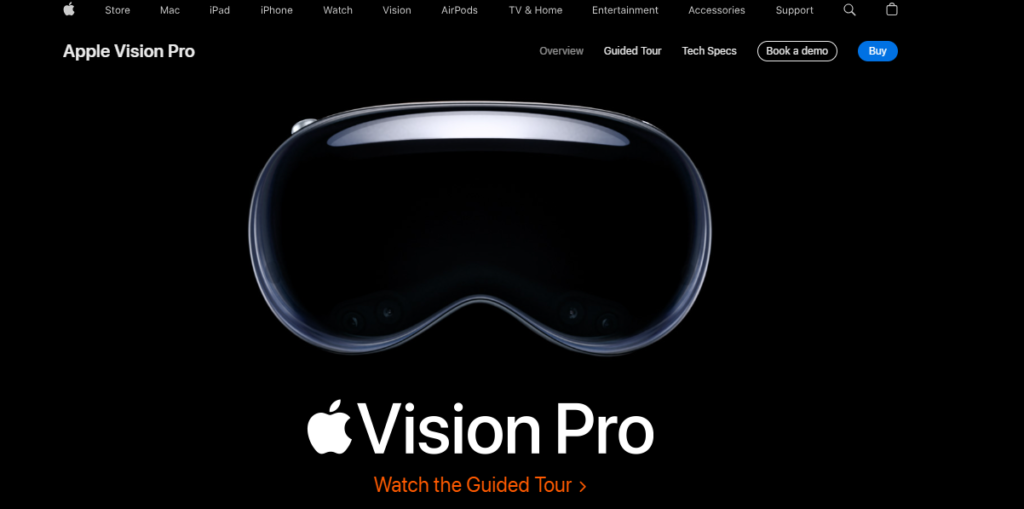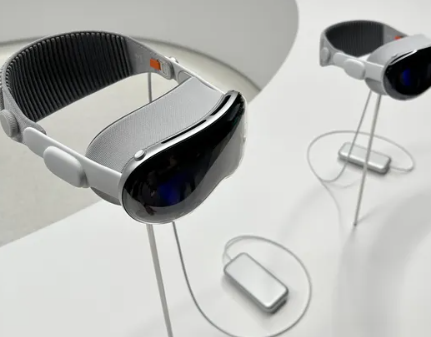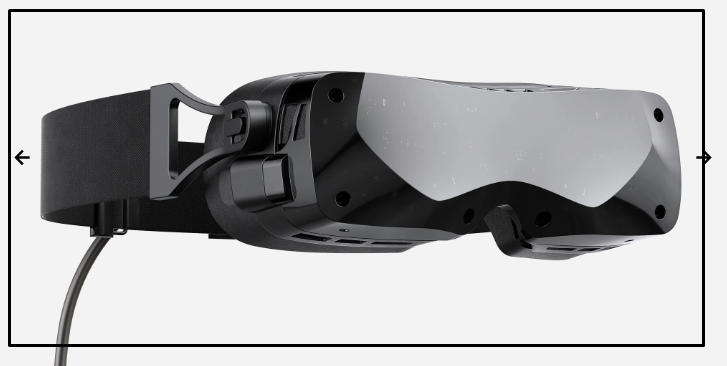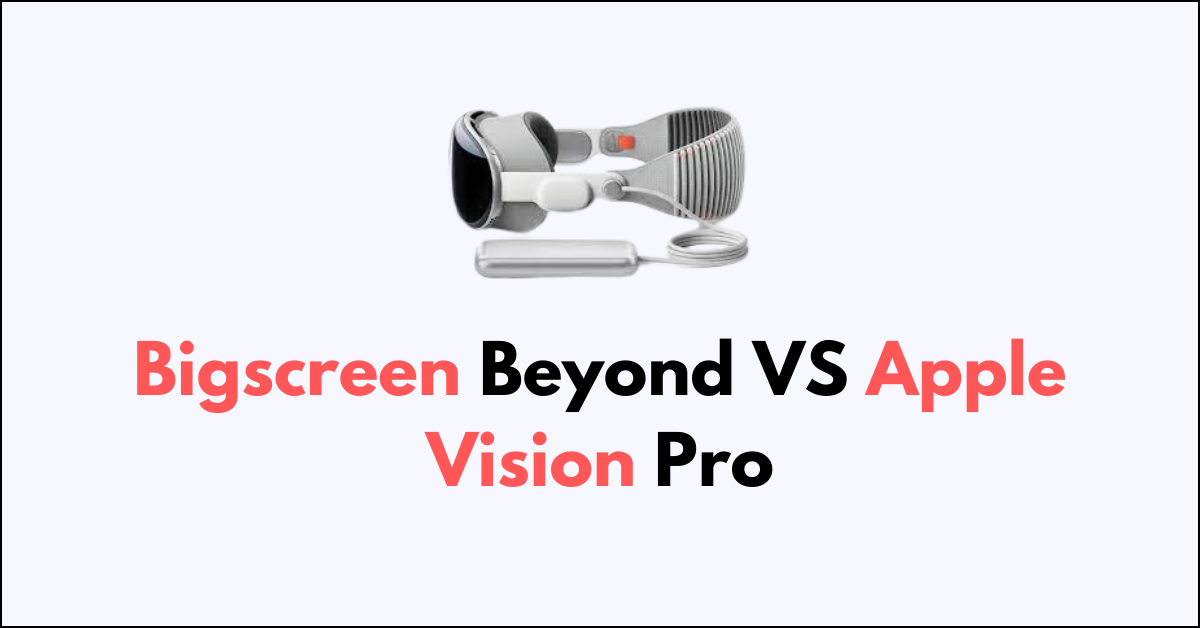When it comes to the world of virtual reality, the Apple Vision Pro and Bigscreen Beyond represent two of the most advanced headsets on the market, each with its own set of features and design philosophies.
The Apple Vision Pro emphasizes a tailored user experience with eye-tracking capabilities and a design focused on custom fit and comfort, while the Bigscreen beyond known for its custom fit and light weight.
Understanding the differences between these two headsets is key for consumers looking to dive into VR, whether for gaming, productivity, or immersive entertainment.
Let’s explore what sets these two apart and how they’re pushing the boundaries of virtual reality technology.
Apple Vision Pro vs Bigscreen Beyond: What’s the Difference?

Specification Difference Of Apple Vision Pro And Bigscreen Beyond
Here’s a comparison of the technical specifications for the Apple Vision Pro and Bigscreen Beyond:
| Specification | Apple Vision Pro | Beyond Screen |
|---|---|---|
| Type | Stand alone with separate battery | PC powered |
| Capacity | 256GB, 512GB, 1TB | – |
| Display | 23 million pixels | 5120 X 2560 pixels |
| Refresh Rates | 90Hz, 96Hz, 100Hz; | Up to 90Hz |
| Chips | M2 and R1 | N/A |
| Camera | Stereoscopic 3D main camera system, 6.5 stereo megapixels | Micro-OLED displays with 2560×2560 pixels per eye |
| Sensors | Multiple cameras, IMUs, LiDAR Scanner, Flicker sensor, Ambient light sensor | Tiny proximity sensor near the nose |
| Battery Life | Up to 2.5 hours general use, 2 hours video watching | 2.5 Hours |
| Connectivity | Wi-Fi 6 , Bluetooth | USB Type C |
| Operating System | vision OS | N/A |
| Compatible OS | Mac OS | Windows 10 &11 and Linux. |
The Apple Vision Pro is a standalone device with its own separate battery, offering storage capacities of 256GB, 512GB, or 1TB. It boasts a display with 23 million pixels and supports refresh rates of 90Hz, 96Hz, and 100Hz. It connects via Wi-Fi 6 and Bluetooth, running on vision OS and compatible with Mac OS.
In contrast, the Beyond Screen is a PC-powered device only connects via USB C type port, which does not specify storage capacity. Its display resolution is 5120 x 2560 pixels, and it can refresh up to 90Hz. The Beyond Screen is compatible with Windows 10 & 11 and Linux.
In summary,
- If you prioritize a portable, standalone VR experience with high-end internal specifications and storage, the Apple Vision Pro might be the best choice.
- However, if you prefer a VR headset that leverages PC processing power for potentially more demanding VR applications and offers a longer battery life, the Beyond Screen could be more suitable.
Design Comparison Of Apple Vision Pro And Beyond Screen


| Feature | Bigscreen Beyond | Apple Vision Pro |
|---|---|---|
| Design Philosophy | Compact design for prolonged comfort | High-tech specs with a focus on VR/AR integration |
| Technology Compatibility | SteamVR compatibility | Designed for various applications beyond entertainment, leveraging VR and AR |
| Construction | Ultra-light construction | Robust feature set which may imply a heavier design |
| Ecosystem Integration | Not specified | Apple’s ecosystem integration |
| Market Position | Seen as an alternative to heavier VR headsets | Premium mixed reality headset with a premium price |
| Usage Focus | Aimed at long-duration PC-based VR sessions | Versatile applications including decision-making processes |
| Target Market | Consumers looking for comfortable, casual VR experiences | Consumers seeking high-end VR/AR applications, including professional use |
- The Bigscreen Beyond is a virtual reality (VR) headset that positions itself as an ultra-compact and ultra-light SteamVR headset.
- On the other hand, the Apple Vision Pro appears to be Apple’s premium entry into the mixed reality market.
- Leveraging both virtual reality (VR) and augmented reality (AR) technologies, it offers users a new way to interact with media and digital content.
- The Bigscreen Beyond opts for minimalism and lightness while the Apple Vision Pro leverages its robust feature set to justify a potentially weightier and more sophisticated design.
Overall:
The Bigscreen Beyond is best for users seeking a lightweight, comfortable VR experience on the SteamVR platform. The Apple Vision Pro suits those wanting a premium mixed reality experience with AR capabilities and Apple ecosystem integration.
Controllers Difference Of Apple Vision Pro And Bigscreen Beyond
The game-changing part is the Apple Vision Pro doesn’t have controllers. It works on eye movement equipped with high-end sensor tracking.
The Apple Vision Pro lets you control your VR experience without needing any physical controllers, using hand movements and voice to navigate. It even tracks your eyes so you can do things like search the web just by looking and speaking.
The Bigscreen Beyond does not come with its own dedicated controllers. Instead, it requires users to purchase SteamVR controllers separately.
The Beyond is compatible with all SteamVR controllers, including the Valve Index controllers, which are known for their precision and the ability to track finger movements, offering a high level of interaction in VR.
Price Difference Of Apple Vision Pro And Bigscreen Beyond
Here’s an exact price comparison in tabular form for the Apple Vision Pro and Bigscreen Beyond:
| Feature | Apple Vision Pro | Bigscreen Beyond |
|---|---|---|
| Starting Price | $3,499 for the base model | $999 |
| Controllers | No Need | Yes. Need to buy seperately |
In conclusion, the Apple Vision Pro and Bigscreen Beyond cater to different segments of the VR market.
- The Apple Vision Pro, with its high starting price of $3,499, positions itself as a premium mixed reality headset, potentially offering advanced features and integrated control systems
- On the other hand, the Bigscreen Beyond is more accessible with its $999 starting price, appealing to budget-conscious consumers or those new to VR.
- Meanwhile, they need to purchase SteamVR controllers separately, which are required for most VR games and it implies an additional cost on top of the headset itself.
Comparison of Design, Build Quality, and Customer Support: Bigscreen Beyond vs. Apple Vision Pro
The Bigscreen Beyond excels in personalized comfort with a custom-fit interface and is praised for its functionality and robust customer support, ideal for VR users seeking a tailored experience.
The Apple Vision Pro offers a lightweight, durable design with a sleek aesthetic and extensive customer service options, making it suitable for users who prefer a premium brand with a strong design focus and established support network.
| Aspect | Bigscreen Beyond | Apple Vision Pro |
|---|---|---|
| Ergonomics & Comfort | Custom-fit facial interface based on 3D face scans to enhance comfort. | Lightweight design crafted for user comfort during prolonged use. |
| Materials & Durability | User reviews highlight robustness, specific materials not heavily promoted. | Uses magnesium, carbon fiber, and aluminum for a durable build consistent with Apple’s design language. |
| Aesthetic Appeal | Focuses on functionality and personalized fit over traditional aesthetics. | Sleek, minimalist design that aligns with Apple’s established aesthetic ethos. |
| Customer Service | Dedicated support team known for being approachable and solutions-oriented. | Benefits from Apple’s established global customer service infrastructure, with multiple support options available. |
| Warranty & Repairs | Standard warranty with comprehensive repair services and online troubleshooting resources. | Standard warranty extendable with AppleCare+, streamlined repair service, and in-person support at Apple Stores. |
For users who value a bespoke fit and hands-on customer service, the Bigscreen Beyond is the better choice, whereas the Apple Vision Pro is best for those who prioritize a high-end mixed reality experience with reliable and accessible brand support.
Unique Features and Capabilities
When you consider the Apple Vision Pro and Bigscreen Beyond, it’s important to focus on what sets them apart in terms of features and capabilities.
Apple Vision Pro:
- Mixed Reality (MR): The integration of augmented reality (AR) and virtual reality (VR) offers a composite view that merges the real world with digital overlays.
- LiDAR Scanner: Enables advanced spatial awareness for more precise mixed reality experiences.
- Ecosystem Integration: Seamless connectivity with other Apple devices for a unified user experience.
Bigscreen Beyond:
- Custom-Fit Comfort: The Bigscreen Beyond offers a unique custom-fit facial interface, tailored to the individual user’s face through a 3D scan.
- Ultra-Compact Design: It stands out as one of the smallest and lightest VR headsets on the market,.
- SteamVR Compatibility: The Beyond is fully compatible with all SteamVR controllers, such as the Valve Index controllers.
| Feature | Apple Vision Pro | Bigscreen Beyond |
|---|---|---|
| MR/AR Functionality | Advanced MR with LiDAR | High-quality passthrough |
| Controllers | Custom Apple controllers | Hand tracking technology |
| Device Integration | Synchronizes with Apple ecosystem | Supports both Windows and Linux. |
| Unique Selling Proposition | High-fidelity MR experiences | Light weighted, unique custom fit and 3D scan |
Both devices aim to offer you unique ways to interact with digital content, and your choice may depend on whether you prefer the Apple Vision Pro’s MR prowess with robust ecosystem compatibility, or the Bigscreen Beyond emphasis on hand tracking and social virtual experiences.
Purpose and Use Cases
When choosing between the Apple Vision Pro and the Bigscreen Beyond, consider how you intend to use your VR headset, as each excels in different areas.
Gaming Experience
The Apple Vision Pro is designed with a focus on mixed reality, offering immersive gaming experiences by blending virtual and real-world elements. However, the Bigscreen Beyond might be your go-to choice if you’re seeking a device that is deeply rooted in virtual reality gaming.
Professional and Business Applications
For professionals, the Apple Vision Pro steps into the arena with strong mixed reality features that could be advantageous for design and collaboration in workspaces.
The Bigscreen Beyond, on the other hand, with its custom-fit comfort and ultra-compact design suitable for extended use in virtual workspaces, where users can manage multiple virtual screens more comfortably than with traditional monitors.
Your preference may depend on whether you value hands-off interaction or tactile feedback for your business needs.
If gaming is your main interest, the Bigscreen Beyond might be the more suitable choice, while the Apple Vision Pro offers a broader, high-end mixed reality experience that can also cater to gaming needs.
